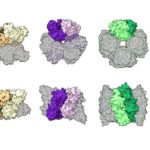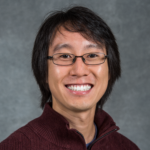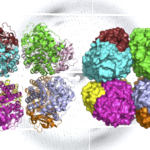Machine learning has a variety of applications in scientific research, from rapidly analyzing datasets to making predictions. At the Joint BioEnergy Institute (JBEI), researchers are using machine learning to find new proteins that play a role in plant gene expression — providing the scientific community with new avenues to explore in bioenergy crop engineering.
A Roadmap for Gene Regulation in Plants
A team of researchers from the Joint BioEnergy Institute’s (JBEI) Feedstocks Division has, for the first time, developed a genome-scale way to map the regulatory role of transcription factors, the proteins that play a key role in gene expression and determining a plant’s physiological traits. Their work reveals unprecedented insights into gene regulatory networks and identifies a new library of DNA parts that can be used to optimize genetic engineering efforts in plants.
Protein Structures Aren’t Set in Stone
A new paper from Biosciences researchers in the Environmental Genomics and Systems Biology Division, the Molecular Biophysics and Integrated Bioimaging Division, and the Joint BioEnergy Institute (JBEI) reveals the possibility that many of the proteins we thought we knew actually exist in other, unknown shapes.
JBEI’s Patrick Shih Awarded Packard Fellowship
Patrick Shih, the Joint BioEnergy Institute’s (JBEI) Director of Plant Biosystems Design in the Feedstocks Division, has been awarded a 2020 Packard Fellowship in Science and Engineering by the David and Lucille Packard Foundation. Shih is an assistant professor in the Department of Plant Biology, College of Biological Sciences at UC Davis, one of JBEI’s six academic research partners.
Study Finds ‘Missing Link’ in the Evolutionary History of Carbon-Fixing Protein Rubisco
In a study appearing in Nature Plants, researchers from UC Davis, UC Berkeley, and Berkeley Lab report the discovery and characterization of a previously undescribed lineage of form I rubisco – one that the researchers suspect diverged from form I rubisco prior to the evolution of cyanobacteria. The novel lineage, called form I’ rubisco, gives researchers new insights into the structural evolution of form I rubisco, potentially providing clues as to how this enzyme changed the planet.
The work was led by Patrick Shih, a UC Davis assistant professor and the director of Plant Biosystems Design at the Joint BioEnergy Institute (JBEI), and Doug Banda, a postdoctoral scholar in his lab.
Was this page useful?








